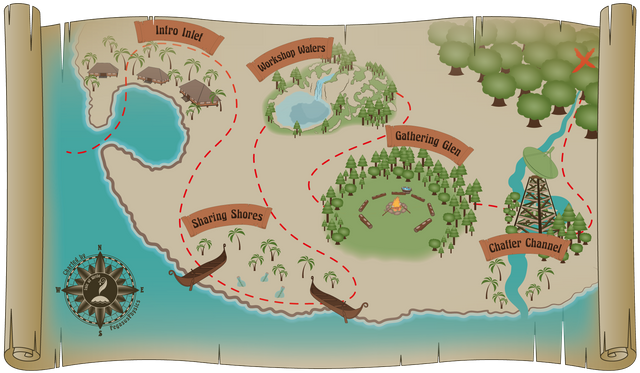If Sameness Was Meant - Day 177 - Daily Haiku - - 100% of SBDs pledged to @rhondak's #tarc dog rescue - and the tale of the "pet" black widow


If sameness was meant
our universe would not have
such diversity

This is my fourth post in a series where all SBDs rewarded, for the next several days, will be donated to @rhondak's #tarc dog rescue, with the hope that others will follow the example and show her some much needed love, and help feed and vet the many dogs under her care.
For those who don't know, @rhondak runs a volunteer dog rescue from her home in Virginia, damned near singlehandedly, and could seriously use our help. She currently has forty dogs in her care, my understanding is that they are mostly larger breeds such as Walker Coonhounds, and she is paying for their care herself, without the benefit of local donations.
All of these dogs require daily feeding, proper veterinary care, to be spayed or neutered prior to adoption, and LOTS of love, time and attention.
Let's all show Rhonda how awesome the Steemit community is, and how much we appreciate her love and hard work on behalf of these dogs, and help her out, each to the best of our own ability. Thank you.

The above photo, which I took in 2009 in a friend's kitchen, is of our dog Sprinkles, a Newfoundland mix weighing in between 85 to 90 pounds most of the time; with his best friend, Cindy, a 6-pound Pekingese. A study in diversity.
She looks larger than she really was in this photo due to her closer proximity to my camera. One of these days I'll find my photos of these two goofballs playing in our Largo back yard, during one of our parties, where their size difference is far more marked and obvious.
The two of them were hilarious while playing; Sprinkles, well aware of his size advantage, played very gently with Cindy, while Cindy seemed to think she was a much larger dog, and didn't back down from Sprinkles even a little bit. They were great companions.

When I was 3 1/2 years old, my family moved to a new house at the end of a cul de sac in the Monterey Highlands community of Monterey Park, a suburb of Los Angeles, California, that was roughly eight miles from downtown, yet seemed a world away.
The area had long been rolling farmland, only recently developed into housing communities for families commuting from the city, and the area was home to a wide diversity of wildlife, especially wild rabbits, and of course the coyotes for which the road that traversed the canyon below our house was named.
The canyon road that our back yard overlooked had only shortly before been known as Coyote Pass Road, now renamed Monterey Pass Road, after the housing developments, but in the early years following the change the coyotes still regularly made themselves known, sending the neighborhood dogs into a barking frenzy.

My sisters and I greeted the coyotes warmly, having an innate love for all wildlings, and we used to hold coyote calling "contests" in our back yard. Occasionally, the boys next door would join in; there was a wooden privacy fence between our properties, so we couldn't see them, but that was half the fun.
And, more often than not, the coyotes answered, in an ancient conversation that could go on for hours, but more often lasted twenty minutes to half an hour, until our moms called us in for dinner.
And, while camping in the summer with our grandparents, mostly in southwestern Colorado, but ultimately all over the Four Corners states, we would sit by the camp fire and call coyotes. And when they responded, as they often did, it made our nights complete.

When we first moved into the house, I was 3 1/2, and my sisters were 7 1/2 and 10 years old, respectively. So my mother took great pains to introduce us to our wild neighbors, large and small, so that we would know which were beneficial, and which to watch out for and avoid.
One of the first she introduced us to was a black widow spider, on the logic that making certain we could recognize it on sight would make us more conscious of its presence, and less likely to be harmed. The house had sat vacant for about six months before we moved in, so in moved crickets, and back widow spiders followed the crickets, which are among their favorite prey.
So one afternoon, when we got home from school, there was a new addition to our happy home: a large female black widow spider, which my mother had caught and put in a large glass jar, placing it on the lazy susan on our kitchen table, which was where we ate most of our meals
Talk about a conversation starter! "Pass the salt and pepper" took on a whole new meaning, particularly when we had guests for dinner!

After the first week or so, during which my sisters and I enthusiastically caught crickets for the spider, my mom decided that it was probably time to release her back into the garden. But when she started to do so, she realized that the spider had created an egg sac, and so she waited until we got home from school, so that she could show it to us.
She told us about the egg sac, and turned the jar upside down, so that we could see it better.
And the most fascinating thing happened; the black widow, not happy with her egg sac now being on the effective bottom of the jar, set about anchoring her spider silk between the top and bottom of the jar, connecting a line to the egg sac, and rigging up a sort of bio-pulley with which she raised her egg sac to what was now the top of the jar.
This was just too cool. So, for the next several days, we took turns turning the jar over, simply so that we could watch with fascination as the spider diligently moved it back to the top of the jar.

Then one afternoon, as my mom checked the jar, she noticed that the jar was oddly cloudy; the eggs had hatched, literally thousands of tiny translucent black widow hatchlings were crawling all over the inside of the jar, and, as their mother had been unable to escape the jar, they had eaten her.
My mother was both fascinated and revulsed, but her overriding priority at that moment was to prevent an invasion: the crickets, and the black widow spiders that fed upon them, lived primarily in our garage, and only rarely made an incursion into the house.
Yes, the garage was attached to the house, via the kitchen, but my mother was determined that the thousands of tiny translucent black widows not escape through the air holes of the jar, and thus establish a permanent residence inside our home.
I'm not certain, but I believe a can of Raid may have been involved.

We had another spider "guest" in our home, several years after the black widow spider, as I'm guessing I was seven or eight by this time; but this one was not only not deadly, but beneficial and harmless, although huge.
Nicknamed the "bird spider," as they can indeed prey upon baby (and unwary adult) birds, the bird spider is actually one of several large blondish tarantulas, native to California and the Desert Southwest, that primarily eat lizards, baby snakes, crickets and other insects and spiders, and small rodents such as mice and moles.
Much as she had with the black widow spider, my mother caught a large bird spider, placed it in a much larger glass jar, and the spider was so huge that it was unable to fully extend its legs within the confines of the jar.

Once again, my sisters and I were pressed into duty to capture crickets for our new guest, who was very interesting indeed. And in this case, my mother wanted to make certain that we could recognize it, realize that despite its "scary" appearance it was quite harmless, and take care not to harm any we came across, or to allow them to be harmed by others.
Once more around the lazy susan, pass the pepper became an opportunity to "spin the spider," and s/he became a favorite pet.
But s/he was far more seriously confined by the jar, as s/he had a leg span of around eight inches, and so after a couple of weeks, my mother decide to let the spider go. She took it outside, placed it on our dichondra lawn, and walked back to the house.
And the spider followed her home.

She then took the spider to the very edge of our property, placed it in the cover of the ice plant that covered our hillside, and walked back to the house. And, once again, the spider followed her home.
What my mother had not counted on was the fact that we were inadvertently giving the spider exactly what it needed . . . in nature, tarantulas live in underground burrows, and so are used to cramped quarters, and emerge at night to hunt their prey.
S/he had no need to leave the jar, as we were bringing fat crickets two or three times daily, which is likely more than she would catch on an average night . . . and all without her having to expend her own energy hunting.
Quite simply, s/he liked being fed.

My mother finally gave up, took the spider out and re-released her into the ice plant, but this time she brought the broom; and, being very careful not to actually hit the spider, she chased it into the ice plant with the broom.
Her description of the encounter was hilarious, and I would LOVE to have seen it as it happened. ;-)
Of course, my mother also regularly "saved" our neighbor when harmless snaked showed up in her yard, as my mother would diligently go and collect them . . . and then, surreptitiously, let them go on our side of the fence.
In any case, my mother's final strategy worked; no more blond bird spider following her back to the house. We missed her, but we knew she was better off outside, in her own environment, rather than in a jar spinning around on our kitchen table.

As nocturnal critters, bird spiders and tarantulas are only rarely seen, but we did see another shortly before we moved from that house. We came home late one night, I believe from a play or film we had attended, only to find a very large bird spider hanging out on the screen of the window that was next to our front porch.
Since we hadn't been home, the porch light was on, and I'm guessing it was lying in wait for the moths that were attracted to the porch light. Patient spider. I like to think that it was our former house guest, come to pay her regards, and to let us know that s/he was still doing fine.
I hope one day s/he mated and that her descendants are still roaming wild around the L.A. area. Interestingly, both males and females reach sexual maturity at around ten years of age, but while the male dies soon after breeding, the female can live up to twenty-five years.
Diversity is awesome.

#ecotrain #ghsc #tarc #steemsugars #teamgirlpowa #womenofsteemit #steemusa #qurator #steemitbasicincome #knot #bethechange #chooselove #naturephotography #photography #neighbors #beauty #love #animals #dogs #rescue #adoption #spayandneuter #homesteading #permaculture #naturalhealing #naturalmedicine #dogrescue #dogsofsteemit #grace #poetry #philosophy #beablessing #spider #blackwidow #tarantula #californiatarantula #birdspider





art and flair courtesy of @PegasusPhysics


@crescendoofpeace upvoted this post via @poetsunit!!

Poetsunited - DISCORD - @poetsunited - witness upvote